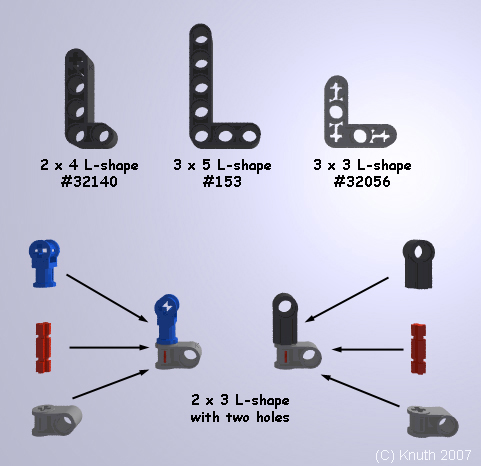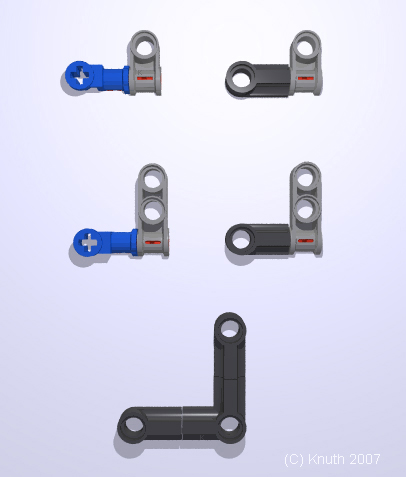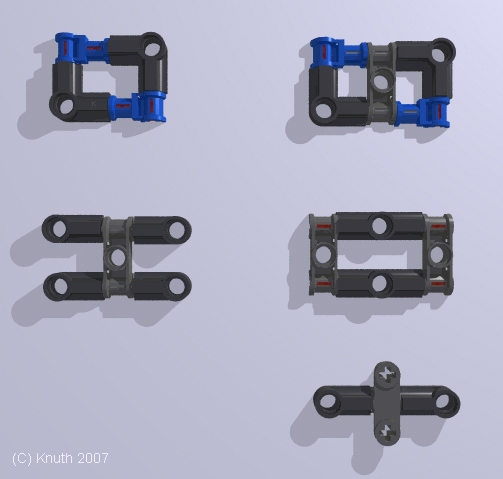LEGO Technic Liftarms can be very useful for bracing structures. In these cases these L-shaped pieces are often used heavily. Many times, however, they are either the wrong size or shape for the job or you just don’t have enough pieces. One alternative is to create similar structures from smaller parts.
Complex structures are almost always constructed hierarchically. Small parts are combined to create more complex medium-sized parts. Medium-sized parts are combined to create even more complex larger parts. To help speed up the process, it often helps to have a library of small useful constructs.
Think of these as META-PARTS.
Here we present a library of constructs that can in many cases act as liftarms for bracing various structures. Note that these designs can easily pull apart when you apply forces in certain directions—usually within the plane of their design. They will not be stable for constructions requiring that they withstand forces in those directions. However, if you need to brace against forces that are directed out-of-plane, or to prevent torsion (twisting). These constructs may help. If you are desperate, and are willing to sacrifice purity, a drop of superglue will do wonders.
The Concepts
There are three L-shaped pieces that LEGO produces: 2 x 4 L-shaped Liftarm, 3 x 5 L-shaped Liftarm, and the 3 x 3 L-shaped Liftarm Thin. These are shown in the top row of the figure below.

One can construct pieces that act like the L-shaped liftarms, although they have only two holes. Two such constructs can be seen in the bottom row of the figure above. These pieces can easily come apart if pulled in the right direction, so some considerations must be made as to whether they are appropriate. They are also not quite as stable as the liftarms (although in desperate situations, where precision and permanence is required, some superglue would take care of both problems).
Below, is a library of LEGO Meta-Parts. Clearly, some will be more useful than others. This library is in no way exhaustive, as there are very many ways to combine parts. For an interesting discussion on the number of ways to combine 2 x 4 LEGO bricks consult:
“On the Entropy of LEGO (TM)” by Bergfinnur Durhuus and Soren Eilers, 2005, arXiv:math/054039v2″
L-Shaped Constructs
Here are five L-shaped constructs: 2 x 3 , 3 x 3 , and 4 x 4.
Note that the ends of the 4 x 4 L-shaped construct can be replaced by the Technic Connector with cross hole (the blue pieces elsewhere in this figure). These pieces can also be extended as long as you wish by adding the 180 degree Technic Angle Connector #2.

T-Shaped Constructs
Here are five T-shaped constructs. Because the two on the top row (and the one on the bottom left) use an axle pin, they can twist, which may make them unsuitable for some applications. As you can see from the example on the bottom right, this is just the construct on the top left with the Technic Angle Connector #2 inserted.

S, U, W -Shaped Constructs
Here is a set of constructs that are shaped like the letters S, U, and W. The ones with two pin Axle Joiners are typically a little more wobbly than the others.

The next installment will describe other meta-parts.




















